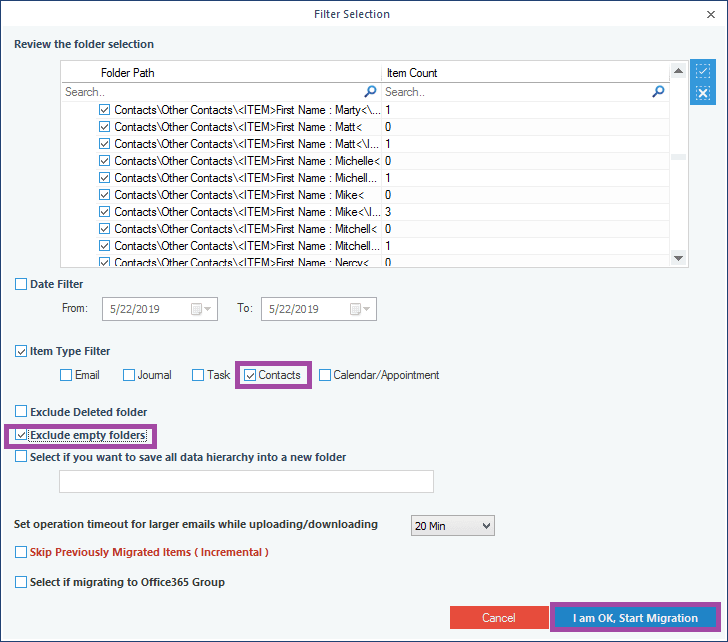

When complete, users are provided with new login credentials and need to reconfigure their Outlook and other mail app profiles. When that's complete, Microsoft 365 or Office 365 copies the contents of all users' mailboxes to their new mailboxes in Microsoft 365 or Office 365. With cutover migrations, Microsoft 365 or Office 365 reads your Active Directory and creates new recipients in Microsoft 365 or Office 365. While you can do cutover migrations with later versions of Exchange, we strongly recommend that you use the Express hybrid migration option instead. For more information about staged migrations, check out What you need to know about a staged email migration to Microsoft 365 and Office 365.Ĭutover: Cutover migrations are best for organizations running Exchange 2003 or Exchange 2007 with fewer than 2000 mailboxes who want to move mailboxes over a couple days. After a mailbox is moved, users are provided with new login credentials and need to reconfigure their Outlook and other mail app profiles. When that's complete, you can select batches of mailboxes to move gradually to Microsoft 365 or Office 365. With staged migrations, you perform a one-time Active Directory synchronization with Microsoft 365 or Office 365 to create recipients in Microsoft 365 or Office 365. Staged: Staged migrations are available for organizations running Exchange 2003 or Exchange 2007 with more than 2000 mailboxes who want to move mailboxes over in batches over a couple weeks. If you want to learn more about express hybrid migrations, see Express Hybrid Migrations. Express migration does a one-time Active Directory synchronization with Microsoft 365 and Office 365 to set up recipients and then helps move their mailboxes to Microsoft 365 or Office 365.


If you want to learn more about minimal hybrid migrations, see Minimal Hybrid Configuration.Įxpress migrations are best for small organizations that want to finish their migration within a couple weeks. However, features like free/busy synchronization and other enhanced features aren't available.
#Office 365 contacts not migrated full#
Like full hybrid, minimal hybrid migrations set up on-going Active Directory synchronization with Microsoft 365 and Office 365 to help with recipient administration. Minimal hybrid migrations are best for medium-sized organizations that have a few hundred to a couple thousand mailboxes and want to finish their migration within a couple months.

If you want to learn more about full hybrid migrations, see Exchange hybrid deployments. Active Directory is synchronized with Microsoft 365 and Office 365, free/busy information can be exchanged, enhanced mail flow options become available, and more. Hybrid: Hybrid migrations come in a few different flavors - full, minimal, and express.įull hybrid migrations are best for large organizations that have many thousands of mailboxes and need complete integration between their on-premises Exchange organization and Microsoft 365 or Office 365. Depending on your answers, the advisor will choose one of the following migration options: When you run the advisor, it'll ask you questions about your existing on-premises environment to help you figure out the best way to get your email to Microsoft 365 or Office 365. What options will I have when I run the migration advisor? You'll need to log into your Microsoft 365 or Office 365 organization when you open this link.


 0 kommentar(er)
0 kommentar(er)
